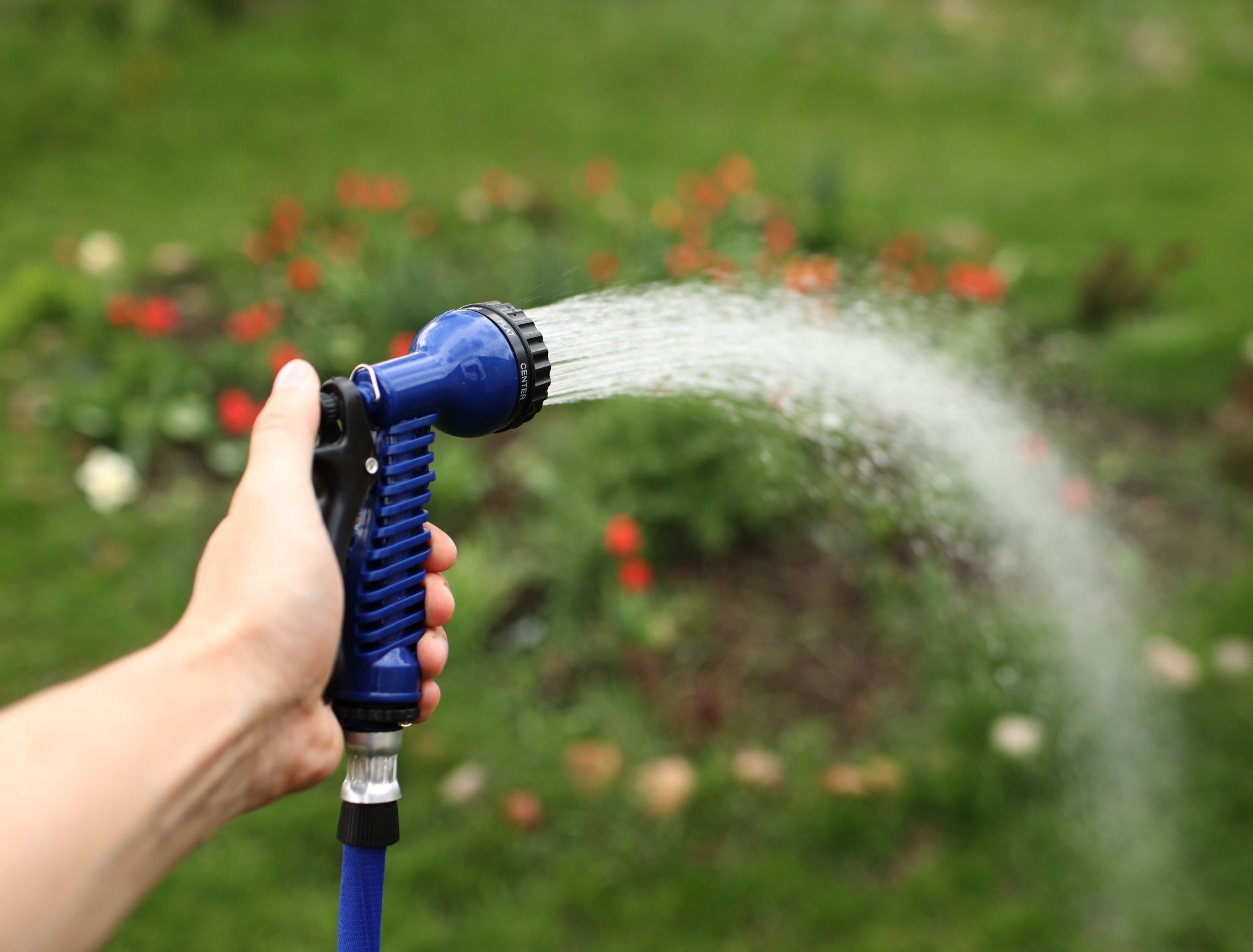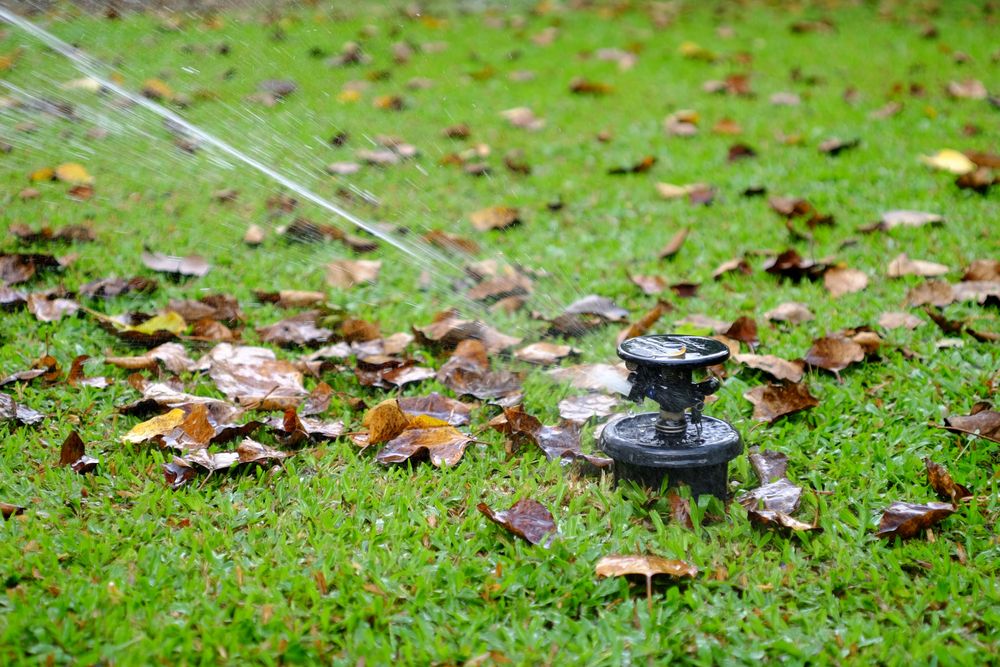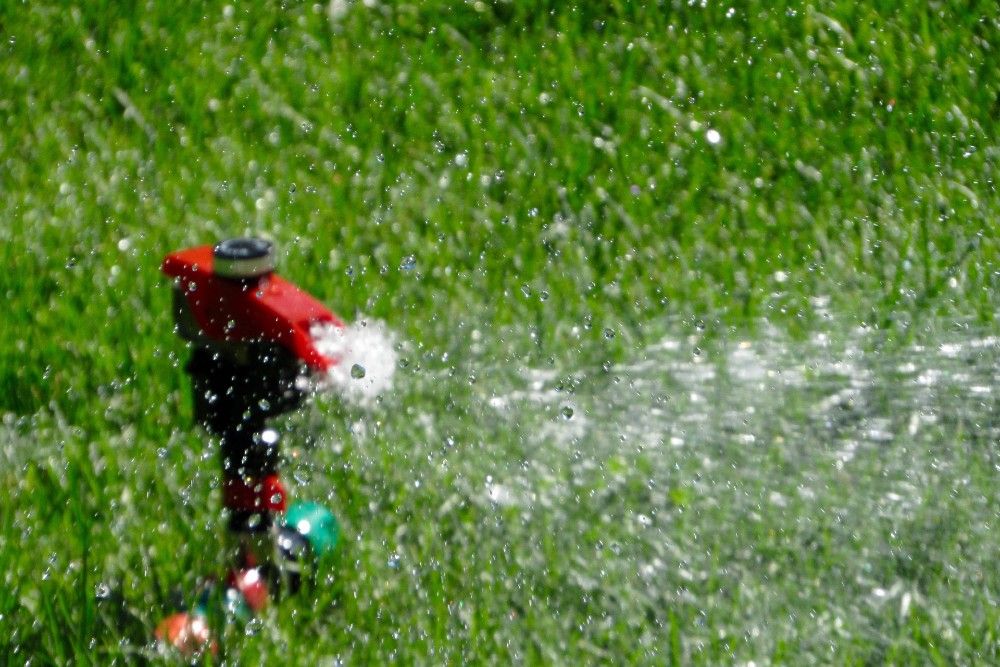After spending countless sunny summer days enjoying your yard, the weather starts to change, and so must your lawn care. With the cool night temperatures dropping ever lower, it's crucial to know when to stop watering your lawn and to understand the reasons behind it.
Fall is also a great time to improve your lawn, and with a few tips, it can enter into next spring healthy and ready to thrive.
When To Stop Watering Your Lawn
Image credits: komkrit Preechachanwate via Shutterstock
The exact time of year when you should stop watering your lawn can differ, and it depends on which zone you live in. There are, however, general guidelines you can follow.
Your last water should generally be near the end of September or October when your lawn is going into dormancy for the winter. A rule of thumb is water after the leaves have fallen and before the first frost. Come fall, the sun is less direct, so water on your lawn doesn't evaporate as quickly as in the summer.
Note these changes as you head into September and adjust your watering schedule to two days a week before your final watering date. You will also want to turn off and blow out any irrigation lines in your yard to avoid freezing or burst pipelines over winter.
Why Proper Watering Is Important
Image credits: Anthony Lee via Unsplash
Watering your lawn correctly all year is one of the key determining factors in whether or not you have a healthy lawn. A proper watering can help form a healthy root system, and lay the groundwork for the seasons going forward.
As each lawn differs in species of grass, amount of sun, soil quality, and drainage, it is best to water based on what you notice happening to your grass rather than a rigid watering schedule.
The type of lawn care provided in the fall can make or break how your lawn fairs in the spring. If your lawn heads into winter underwatered and stressed from drought or drought-like conditions, it will have a difficult time thriving come spring. On the other hand, if you soak your root system too late in the season, this will hinder its growth.
Fall Lawn Care Tips
Image credits: Lisa Fotios via Pexels
Aside from proper watering techniques, there are other things you can do to set your lawn up for success through winter.
Mowing
Heading into fall, the growth rate of your lawn will slow down until it becomes dormant. It is good to continue cutting it for as long as it is still growing.
You will want to keep the grass around two inches tall heading into winter. If it is too long, it can mat and leave your lawn vulnerable to winter diseases such as brown patch. You should also make sure the blades of the mower are sharp at this time of the year -- A dull blade and a rough cut could cause the tips of your grass to brown.
However, if it is too short, it can reduce the grass's ability to make and store food for spring. Maintaining a two-inch length will provide adequate protection and give it the best chance to thrive in spring.
Speaking of mowing, many gardeners are making the switch to more eco-friendly options.
Fertilizing
Before fertilizing your lawn, check to see if you have cool season grass or warm season grass. Fall will be a great time to fertilize cool season grasses (and some warm season grasses).
Fertilizing with a nitrogen-rich fertilizer once in early fall and then when you do your last cut of the season is a good practice to follow.
A dense, healthy lawn can reduce the time it lays dormant over winter and helps it come back to life in the spring.
Aeration
Aerating is the process of removing small cores from your lawn. This procedure can help remove the build-up of dead grass blocking the absorption of water to the roots.
Aerating too late in the season can dangerously expose your lawn, so make sure to do this about a month or so before the first frost.
Seeding
Depending on where you live, fall can be the best time to seed your lawn. However, in zones with temperature drops where the soil freezes over winter, your lawn will sadly not take to seeding in the fall. Nevertheless, other locations where the soil does not freeze will benefit from this procedure before the colder months.
Like fertilizing, seeding, or over seeding your lawn in the fall can help create a dense healthy lawn that can withstand the winter months and thrive come spring.
Raking
Clearing all the debris accumulated on your lawn before winter is an important task. Having a layer of dead leaves can damage your grass over winter and prevent a healthy spring comeback. Instead of having the leaves sit there, rake them up and compost them!
Fall Into Action
Remembering to stop watering your lawn around the end of September or October is a key to keeping your lawn from being damaged by frosty weather. Checking some fall lawn care tips off your list can help create a dense, healthy lawn ready to go come spring. With all these suggestions, you are sure to succeed this fall
Have you started preparing your lawn for winter? Leave a comment and let us know how your fall care is going!




